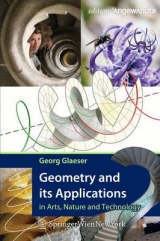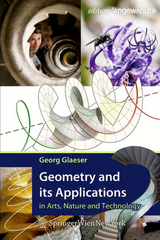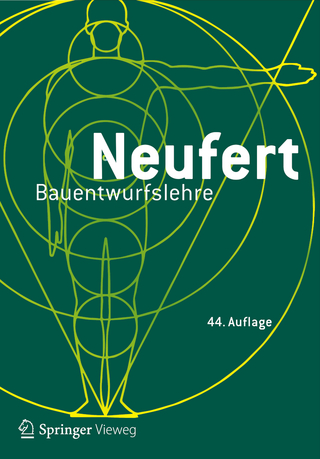Geometry and its Applications in Arts, Nature and Technology
Springer Wien (Verlag)
978-3-7091-1450-6 (ISBN)
- Titel erscheint in neuer Auflage
- Artikel merken
Geometry and its Applications is meant to address those who are interested in geometrical relationships, from simple plane geometry problems to difficult tasks in spatial geometry. The main emphasis is on the application of geometry in different fields such as engineering, biology, art history and music. Important geometrical terms and concepts such as multi-view projection and 3D projection, the curvature of lines and surfaces, the geometry of movement and non-Euclidian space are explained with many examples and numerous photos. Two practical tutorials round off this volume: free-hand geometrical drawing and the geometry of photography. Easy to understand tips support readers as they create their own distinctive, accurate spatial sketches.
Georg Glaeser ( born in 1955 in St. Johann im Pongau, Austria) is an Austrian mathematician and has been a professor of mathematics and geometry at the University of Applied Arts, Vienna since 1998. He studied mathematics and geometry at the University of Vienna from 1973 to 1978 before completing his doctorate and habilitation. Glaeser was also a visiting professor at Princeton University between 1986 and 1987 and has written a number of books on computational geometry and computer graphics.
Introduction.- An idealized world out of simple elements: Points, straight lines and circles in the drawing plane. Special points inside the triangle. Elemental building blocks in space. Euclidean space. Polarity, duality and inversion. Projective and non-euclidean geometry.- Projections and shadows - Reduction of the dimension: The principle of the central projection. Through restrictions to parallel projection and normal projection. Assigned normal projections. The difference about technical drawing.- Polyhedra: Multiple faced and multi-sided: Congruence transformations. Convex polyhedral. Platonic solids. Other special classes of polyhedral. Planar sections of prisms and pyramids.- Curved but simple: Planar and spatial curves. The sphere. Cylinder surfaces. The ellipse as a planar section of a cylinder of revolution.- More about conic sections and developable surfaces: Cone surfaces. Conic sections. General developables (torses). About maps and “sphere developments”. The “physical” reflection in a circle, a sphere and a cylinder of revolution.- Prototypes: Second-order surfaces. Three types of spatial points. Surfaces of revolution. The torus as a prototype for all other surfaces of revolution. Pipe and duct surfaces.- Further remarkable classes of surfaces: Ruled surfaces. Helical surfaces. Different types of spiral surfaces. Minimal surfaces.- The endless variety of curved surfaces: Mathematical surfaces and free-form surfaces. Interpolating surfaces. Bézier- and B-spline-curves. Bézier- and B-spline-surfaces. Surface design, only differently.- Photographic image and individual perception: The human eye and the pinhole camera. Different techniques of perspective. Reconstruction of spatial objects. Other perspectives. Geometry at the water surface.- Everything is moving – Kinematics: The pole, about which everything revolves. Different mechanisms. Ellipse movement. Trochoid motion.- Movement in space: Movement on the sphere. Genmeral spatial movements. Where is the sun? About sundials.- A: The variety of tessellations.- B: A course in free hand drawing.- C: A geometrical course about photography.- D Nature of geometry and geometry of nature.
| Reihe/Serie | Edition Angewandte |
|---|---|
| Sprache | englisch |
| Gewicht | 1431 g |
| Einbandart | gebunden |
| Themenwelt | Technik ► Architektur |
| Schlagworte | Descriptive Geometry • Geometrical Area • Geometrical Draft • Spatial Geometry |
| ISBN-10 | 3-7091-1450-0 / 3709114500 |
| ISBN-13 | 978-3-7091-1450-6 / 9783709114506 |
| Zustand | Neuware |
| Haben Sie eine Frage zum Produkt? |
aus dem Bereich





